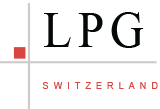Principles of Swiss accounting: practical aspects
The principles of valuation
The principles of Swiss accounting valuation are outlined in articles 664 through 670 of the Swiss Code of Obligations
The assets must be evaluated at the purchase price or the cost price, minus the necessary depreciation.
They should in any case be evaluated at their net asset value because this is the weakest.
The “fair value” evaluation
As an exception to the principle of the valuation of assets at the purchase cost or cost price, quoted securities may be valued at their fair market value than at the average market value for the month preceding the closure of the balance sheet (article 670 of the Swiss Code of Obligations).
Reevaluation of valuations
Revaluation is usually prohibited, but is only permitted through a licensed auditor when the company is in a situation of net loss where the company's capital falls below one half the share capital plus legal reserves.
In a similar circumstance, property and holdings can be reevaluated up to their real value (article 670 CO of the Swiss Code of Obligations)
Housing costs
Housing costs can be capitalized if they are amortized over the course of 5 years.
Recovery of provisions
The provisions which are no longer applicable are not necessarily included (article 669 CO of the Swiss Code of Obligations). A comment is often required in the balance sheet notes.
Associated current accounts / shareholder receivable account
For a company to accept a loan or an advance from its companies is not in itself prohibited, but must be absolutely prohibited when the shareholders do not reimburse the company and the company does not have enough free reserves which are at least the equivalent to the amounts already loaned (applied in articles 678, 680 and 717 of the Swiss Code of Obligations). This situation will have tax consequences with the application of the withholding tax.
The constitution of the general reserve (legal reserve)
It affects
- 5% of profits from the legal reserve as long as it has not reached 20% of the company's capital,
- 10% of all dividends over 5% of the capital as long as the reserve is not 50% of the company's capital.
The presentation of the profit and loss account
To ensure that the conditions outlined in article 663 of the Code of Obligations are fulfilled, the profit and loss account (income statement) is presented as follows:
Income from sales and services
Other income
Total turnover
Material and merchandise costs
Personnel costs
Overhead (or operating costs)
Amortization
Total operating costs
Operating income
Financial income
Yield of holdings
Total financial income
Financial costs
Financial income
Extraordinary income
Profit from the transfer of tangible assets
Total extraordinary income
Extraordinary costs
Income tax
Net profit (or loss)
The presentation of the balance sheet
To ensure that the conditions outlined in article 663 of the Code of Obligations are fulfilled, the balance sheet is presented as follows:
Assets
Capital- shares not fully paid up
Cash
Holdings
Receivables resulting from sales and services
Own shares
Other receivables and inventories
Receivables from companies of teh group or shareholders
Other assets
Total current assets
Fixed capital
Tangible assets
Intangible assests
Total of the tangible assets
Accrued expenses
Financial year deficit
Total assets
Liabilities
Trade creditors
Other short term debts
Long term debts
Accrued liabilities
Total debt capital
Capital shares
Legal reserve
Reserve for own shares
Non distributed accumulated profit
Profits from the financial year
Total equity capital
Total liabilities

